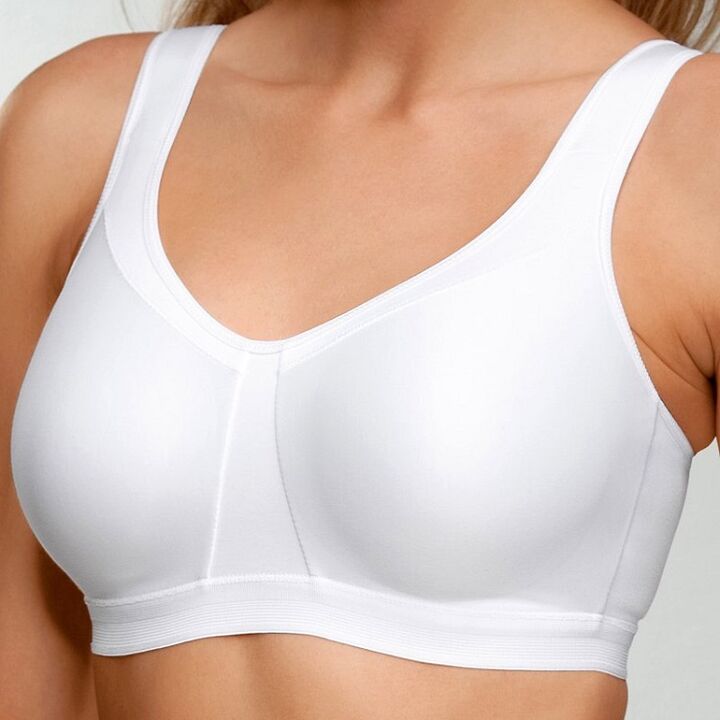Breast augmentation with hyaluronic acid is considered the safest method today. Before this method was born, the method of breast reconstruction was used.
Surgery is performed on the chest in which the implants are inserted. The bust is increased a few sizes but it doesn't look natural.
At the same time, no one can fully guarantee that the operation will take place without complications. The introduction of this method of breast augmentation brings women less risks.

How to lift breasts with hyaluronic acid?
Many people have heard of hyaluronic acid. Someone knows it is the main component of the synovial fluid, which provides lubrication for articular cartilage in the connective tissues, and someone has heard of it from the world of cosmetology.
In particular, it is known for maintaining skin firmness and elasticity. How did this happen?
Hyaluronic acid has the unique ability to attract and hold water like a sponge, providing volume and hydration to tissues.
It is thanks to this feature that this polysaccharide has been successfully applied in breast augmentation plastic surgery.
This technique allows you to get the desired breast size without resorting to surgery.
Breast augmentation is performed by injecting a gel, specifically a transdermal filler based on hyaluronic acid.
Since the molecules of this polysaccharide are large and retain a large amount of water, it has a consistency similar to that of a thick gel. To enlarge breasts one size, about 300 ml of gel is needed.
How is the procedure done? The procedure is painful, so it's done under local anesthesia. Before the operation, all necessary tests are performed and the date of operation is indicated.
Non-surgical breast augmentation takes about 40 minutes. The drug is injected into the chest using a catheter.
This is a special tube that resembles a feather and replaces a needle. At the injection site, a puncture remains, on which cosmetic sutures are placed.
The breast is shaped to the exact shape that the patient wants. It is very important that the procedure be performed by an experienced podiatrist, because not all doctors are able to insert the gel into the breast correctly.
After the end of the course, on the 2nd and 3rd day, the breast area appears uncomfortable pain and burning sensation. Redness of the breast skin, hematoma formation, and itching may also occur. All these symptoms will soon disappear.
Recovery time
Within 1 month, the patient should not let the upper part of the body work hard. Both extreme heat and cold are contraindicated.
You cannot put pressure on the mammary gland, in particular massage or lie down on the mammary gland, because the gel can move and the breast becomes deformed.
To support the bust, you should wear compression clothing. Recovery time depends on the patient's age, the quality of the epidermis, the amount of gel injected, and the lifestyle.

Effective time
Fillers are divided into absorbable and non-absorbable. For breast augmentation, injections of the first type are used mainly, since they are based on hyaluronic acid, which quickly dissolves.
The effects of its effects are temporary - from 6 months to a year. Non-absorbable injections are very dangerous by the development of various complications, so they are practically not used.
Botox for breast augmentation is often confused with transdermal fillers. The difference is that Botox preparations are harmful to the body because they contain toxins that cause botulism.
Gels with hyaluronic acid as fillers help increase tissue volume.
What types of breast fillers are used?
There are many different hyaluronic acid fillers available for breast augmentation.
Since they are different in nature, the specialist should select them, based on the characteristics of the patient's skin and mammary glands.
One more point to note is that the gel with hyaluron has a detoxifying effect. It is a special enzyme called hyaluronidase. He can destroy the failed result.
Contraindications and complications
Is breast augmentation with hyaluronic acid contraindicated? There are some cases when it is not possible to use gel for breast augmentation.
Contraindications include any breast tumor, both benign and malignant.
Such manipulations are not performed even if a woman is planning a pregnancy, because the unabsorbed residues of the gel can compress the milk ducts during lactation. In the case of autoimmune diseases, interventions on the mammary glands are contraindicated.
When performing a mammogram or an X-ray, a cyst is no different from a filler buildup and is often confused.
This makes it difficult to examine the internal organs for possible tumors. Palpation also makes diagnosis difficult.
If the breast is inflamed, surgery and antibiotics will be used to treat it.
Because of profit, many women risk their lives, not paying attention to contraindications.
The effect after using hyaluronic acid is undeniable, and the result is tangible: the breasts become elastic and full, and the skin looks much younger.
But this result is temporary, so you have to repeat the process. Such interventions can lead to negative consequences.
Pros and cons of the procedure
This method is not suitable for women with organ prolapse (ptosis). This procedure will only aggravate the problem.
Hyaluronic acid dissolves over time, but before that, any procedure that involves exposure to the mammary gland should not be used.
The fact that this procedure does less damage to the mammary glands is a big advantage, but after the drug is used in the mammary glands, due to the swelling of hyaluronic acid, the soft tissues, vessels and ducts are compressed.
The drug, which occupies a certain space in the rib cage, acts on nearby tissues.
Why is hyaluronic acid breast augmentation banned in France? This method does not pose any special risks and threats to health.
But as a precaution in this country, they decided to introduce a ban, because after the advent of hyaluronic acid, the diagnosis of malignant tumors was complicated.




























